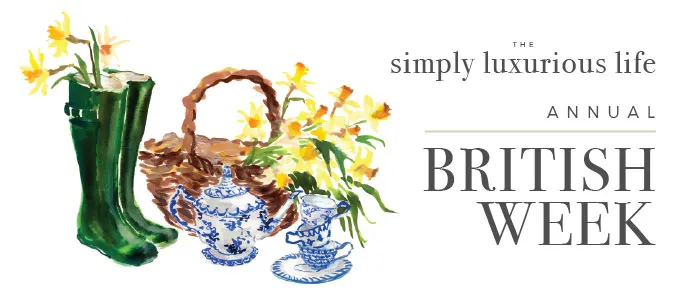Become a Member for as little as $4/mo and enjoy unlimited reading of TSLL blog.
“Resilence is more than bouncing back from adversity. People who are resilient keep pursuing their goals in the face of challenges. Consequently, learning how to regulate your brain’s motivational machinery is a key aspect of resilence.” —Rick Hanson, Ph. D, author of Resilient: How to Grown an Unshakable Core of Calm, Strength and Happiness
Living well and successfully reaching our fullest potential in part resides in understanding what is and is not in our control. Once we understand what we have control over, for example, and for today’s post/episode’s purposes, the mind, then we need to be willing to take the time to learn how it functions and how we can use its talents to enhance the overall quality of our lives.
Dr. Rick Hanson shares in the introduction of his book Resilience that “the brain is continually remodeling itself as you learn from your experiences. When you repeatedly stimulate a ‘circuit’ in your brain, you strengthen it.” After reading his book, which is organized by the needs we have as human beings – safety, satisfaction and connection – readers discover the skills, and then the tools to build those skills to build our resilience. “True resilience fosters well-being, an underlying sense of happiness, love and peace.”
And in order to foster the sense of each of them and hardwire them into our being, we need to experience them, seek them out and consciously savor them so as to remember how to live each day consciously as we build a life we love living each day.
Hanson asserts and I have to certainly agree, when we practice and improve our resilience in good times or seemingly benign moments in our everyday lives, we “will feel less anxiety and irritation, less disappointment and frustration and less loneliness, hurt and resentment. And when the waves of life come at you, you’ll meet them with more peace, contentment and love in the core of your being.”
So let’s start by looking at our everyday lives and discovering how we can strengthen the muscle, the skill, that is resilience.
1.Take care of your own well-being first
“Being good to yourself is good for others. When people increase their own well-being, they usually become more patient, cooperative, and caring in their relationships.”
We can only give our best selves when we care for ourselves well. When our needs are met, we can help others who are in need of generosity, understanding and patience. Read/Listen to episode #242 for 31 Ways to Practice True Self-Care.
2. Notice and savor enjoyable moments
Creating the habit of being self-compassionate is a learned skill. And with any skill, it takes conscious effort and repetition to habituate the skill into our default systems. Hanson advises, “Once you’re having [an enjoyable] experience, feel it as fully as possible and take a little time —a breath or two or ten — to stay with it. The more often you do this, the more you will tend to hardwire psychological resources for yourself.” Once you have strengthened this skill, you will be better able to utilize it during difficult as well as joyous times.
~Learn more about self-compassion and how to cultivate it in episode #122
3. Welcome Enjoyable Moments into Each Day
Conscious living is thoughtful living to pay close attention to how our days are constructed. Now this doesn’t mean we have to plan every minute of the day and it doesn’t mean everything must be nose-to-the-grindstone work or striving for nothing but perfection. What Hanson encourages is to understand and find what is enjoyable about the tasks you both want to do and have to do.
Completing a project at work for example, while the entire task may not be enjoyable, ask yourself, what is and focus on that. In so doing, you are more engaged, more attentive and more likely to give your best and have a more positive outcome.
On the flipside, for those activities you enjoy, make sure you partake in them regularly and savor the enjoyment you derive from doing so. Each time you focus on the reward, the enjoyable part, the brain releases dopamine, norepinephrine and natural opioids which then prioritizes in your mind what actions it wants to continue to pursue unconsciously. So essentially, you are beginning to hardwire your brain for wanting to do things that you consciously know will add quality to your life whether the enjoyment comes from have-to tasks or want-to tasks.
4. Repeat the superpowers you want to be part of your brain’s hardwiring
“The more [neurons] fire together, the more they wire together. In essence, you develop psychological resources by having sustained and repeated experiences of them that are turned into durable changes in your brain.”
Hanson shares that our character strengths, mood, skillful ways, outlook, good habits, etc. are predominantly learned as only one-third are innate in our DNA. The remaining two-thirds are acquired through learning.
This is good news, but it also means we have a massive responsibility in recognizing that we are who we either consciously or unconsciously choose to become. As Hanson coins, “who we learn to be”.
5. Encourage Beneficial Experiences
“See the jewels around you.”
The brain’s negativity bias is programmed to protect us, and so it will bring to the forefront, if we aren’t the master of our mind, all the negative in our days. However, when we understand why the brain is doing this, we can counteract it by seeking out, observing, savoring and incorporate more positive little moments into our day.
From savoring your breakfast or that cold glass of water, observing the beauty of the day, or the happy step of your pup as you head out for your walk, when we pay attention to the good experiences, we are nurturing our well-being. Why? Because if we are regularly letting the negative take the stage of our attention, there is “wear and tear on your body and mind”.
6. Understand the essence of learning
What we learn, we become, and since two-thirds of who we become is learned, knowing how to learn is essential, so we can do it well and learn what will improve the quality of our everyday and overall lives. Hanson’s acrynom for learning is HEAL (H – Have a beneficial experience; E – Enrich it, A – Absorb it; and finally, L — Link it to replace or soothe painful material). The first three steps are the essence of learning.
With that said, we need to live consciously. We need to choose experiences that are beneficial or have the potential to be beneficial. To enrich each of these beneficial experiences, we need to be fully present, taking everything in, slowing down, looking for something we had not seen if we are experiencing something beyond the first time, and then become clear as to why the experience is valuable to you. (a more detailed list regarding how to enrich experiences is hared on page 58 of Hanson’s book).
Once we have enriched it, we need to savor the experience, or absorb it. To be clear, and Hanson points this out and I think this is vitally important to not misunderstand: Absorbing doesn’t mean hanging on, clinging and not letting go. In fact, you are letting it go because you were never holding on to it, just noticing it, being present with the experience and appreciating it. Absorbing has to do with letting yourself feel good, letting yourself bask in the warmth of what has been part of your experience and in your own way, letting it become a part of you. Experiences can stay with us forever. Make sure the experiences that stick are wants that truly jewels.
7. “Let the Flowers Pull the Weeds”
I love this analogy, and the neurology behind the concept demonstrates how we can rewire our mind to reframe or eliminate negative thoughts and unhelpful attitudes about life and replace them with beneficial ones. Hanson points out that practicing mindfulness will be a helpful tool to be able to grow flowers whilst bringing as well to your attention the weed you want to replace. Because when you are able to hold two thoughts simultaneously, it is then that the good can begin to replace the negative, as you are able to recognize that good that is true and begin to chip away at was no longer serving you.
8. Be Mindful of The Self-Critic and Strengthen the Inner Nurturer
“There are two different attitudes or ‘voices’ inside us all, one that is nurturing and another that is critical, one that lifts up and one that weighs down. This is perfectly normal. The inner nurturer brings self-compassion and encouragement. The inner critic helps you recognize where you’ve gone wrong and what you need to do to set things right . . . for most people, the inner critic goes way overboard . . . it’s big and powerful, while the inner nurturer is small and ineffective, which wears down mood, self-worth and resilience.”
The inner critic needs to be kept in check, and this can be hard to do when moments in life, people in our lives become frustrating or hard to work with. We can be excessively harsh on ourselves which is why in such moments, we especially need to have a strong inner nurturer. A simple truth to keep in mind is that overtime those of us who allow our inner critic to run rampant are actually less productive in what we are critical about, and ultimately, that bleeds into our overall quality of life the elevation of living well we are able to reach.
9. Practice “liking” more and “wanting” less
“The root of [wanting] means ‘lack’. It’s natural to like things that are pleasurable, such as a sweet dessert with friends. But issues arise as we move from liking to wanting, from enjoying a meal together to insisting on the last piece of pie.”
When we let our “auto-wanting” take control, we are pulled from the present, we are infusing our minds with the belief that we are not enough or what we already have is not enough. This is draining physically and potentially financially. Instead, practice appreciating – window shopping, so to speak. Whenever you feel “any sense of pressure, compulsion or ‘must-ness'”, take a breath, recenter yourself and remind yourself that the advertisers are doing their job, but you can still appreciate the beauty, goodness, awesomeness, etc. without funding their cause.
This is where the skill of being content will help tremendously. As was shared last week, in episode #244, contentment can be felt everyday, all day, as contentment is not dependent upon external sources. And when we are able to be content, it becomes easier to ‘like’ versus ‘want’.
10. Healthy Intimacy Begins with Healthy Personal Autonomy
“Paradoxically, in order to get the most out of ‘we’, you need to stay centered in ‘me’.”
Intimacy as it appears in our lives can be cultivated with mere acquaintences as well as a romantic partner of 50 years. As defined in the book, intimacy is “to make familiar or known”. And the knowledge of self and security within oneself is the foundation. Because when you are confident that you are able to take care of yourself, you can step forward to be engaged with others, knowing your limits, knowing your boundaries. And if necessary, knowing that if the limits or boundaries are not respected, you can step back and take care of yourself well.
With the relationshps you begin to build or relationships you are currently in, assess if you are able to do the following things:
- fully express your thoughts and feelings
- ask for what you want
- trust your judgment if others disagree with you
- stand up to others
If you are unable or were unable in past relationships that no longer are a part of your life, you may recognize you do not have full personal autonomy in that particular relationship. These may be relationships you either now recognize need to be stepped away from as you now can pinpoint why they don’t feel right, or, if it is only one of the items on the list, you have a specific focus you can bring up to try to improve the relationship.
“Much as autonomy enables intimacy, intimacy supports autonomy. Close and nurturing relationships help a person feel safe and worthy as an individual, which promotes a confident independent. In a positive cycle, autonomy and intimacy feed each other. Together, they make you more resilient.”
Moving forward, keep these abilities in mind as you should be able to exercise all four in a healthy relationship as too should the other person with you in the relationship, thus embodying the paradox shared in the above quote.
We often hear the word “resilence” uttered during times of strife or hardship, but the truth is, as Dr. Rick Hanson points out, strengthening the tool or skill of resilience can elevate the quality of our everyday lives in all of the good moments that we have as well.
As is often discussed here on TSLL and on the podcast, our mind is an amazing mechanism, and to understand how it works, have patience with the rewiring process if we are choosing to do so, can yield awesome outcomes for our life, enriching the journey and lead us where we truly want to go.
Petit Plaisir
~Felicity Jones stars as Justice Ruth Bader-Ginsburg and Armie Hammer stars as her husband Marty Ginsburg
- screenwriter Daniel Stiepleman is Ginsburg’s nephew wrote the script which was then approved by Ginsburg’s daughter, Jane, a prominent figure in the legal world and in the film as well – she is currently a professor of law at Columbia University
- Ginsburg was one of just nine women in the Class of 1956
- The question posed to the 9 women at their welcome dinner by the dean, played by Sam Waterston was verbatim what was said.
- When Marty was diagnosised with testicular cancer during his third year of law school, Ruth did collect notes from his friends and typed up his essays as he dictated them—a process that often began near midnight. When he finished around 2 a.m., she would turn to her own coursework.
- Regarding the case – Moritz v. Commissioner of Internal Revenue – While the legal side of Moritz’s case is accurate, Ruth didn’t fly to Denver to meet with him. It was Marty who made first contact, and he didn’t do so face to face. According to Ginsburg herself, “We met Charles E. Moritz for the first time in the fall of 1971, the night before the argument. He took us to dinner in Denver. He had to hire a babysitter for his mother.”
- Source for more details regarding the film and history from Slate.com

~The Simple Sophisticate, episode #245
~Subscribe to The Simple Sophisticate: iTunes | Stitcher | iHeartRadio | YouTube | Spotify
[podcast src=”https://html5-player.libsyn.com/embed/episode/id/8415260/height/90/theme/custom/thumbnail/yes/preload/no/direction/forward/render-playlist/no/custom-color/d0d4b9;color: #6f7056 !important/” height=”90″ width=”100%” placement=”bottom” theme=”custom”]


